Category: Resident education/Support groups
Posted by Dr. El - July 8, 2015 - Communication, End of life, Engaging with families, McKnight's Long-Term Care News, Resident education/Support groups

Here’s my latest article on McKnight’s Long-Term Care News:

I walked into Mr. Hobart’s room, ready for my initial evaluation. He was a thin, graying man whose loose clothes hung in folds around him. He’d spent every day last week in chemo.
He spoke quietly, discussing his estrangement from his family and the good old days hanging out at the bar. None of his drinking buddies were around. He had no visitors.
Following our talk, I stopped at the nursing station. “What’s his prognosis?” I asked the nurse. “Not good,” she said. I paid a visit to the social worker and asked softly but very bluntly, “Is there a reason we’re medically torturing this man?” “We wanted to put him on hospice, but his brother won’t return my calls,” she told me. She promised to try again. By the next week, hospice services had been arranged. Mr. Hobart died five weeks later.
Unfortunately, this scenario is a fairly typical approach to end-of-life procedures in long-term care. The case highlights common end-of-life challenges in LTC facilities:
• No clear leadership within the treatment team regarding end-of-life care — Often team members, regarding this as a medical situation, expect that the physician will be addressing these issues with the resident and their family. The physician, on the other hand, may view dying as an emotional issue and expect that the social worker and other team members will be handling it.
• Lack of communication with the resident regarding end-of-life wishes — With no designated team member to broach the topic, residents often follow along with the care plan assuming they’re going to get better and that someone will tell them when they’ve reached the point where medical interventions are unlikely to help.
• Lack of communication with family members regarding prognosis and care decisions — Addressing treatment decisions and whether or not to consider hospice or palliative care is often a time-consuming series of discussions with family members and it needs to be handled with sensitivity. This can be difficult to manage in what’s become an ever fast-paced care environment.
• Aggressive medical treatments with very low likelihood of success — There are increasing numbers of medical treatments that can be performed, but questions arise about whether they should be: Is the treatment likely to help? Has the resident been properly informed of the risks and side effects of the treatment? Does the resident understand how it will affect his or her quality of life? Atul Gawande, MD addresses these questions eloquently and in detail in his book, “Being Mortal,” which I highly recommend.
• Late referral to hospice — Hospice is an excellent support for residents and their families. (Unlike in LTC facilities, the entire family –— not just the resident — is seen for treatment.) Most often, however, the referral for hospice services is made when the resident has days or weeks rather than months to live and much of the benefit of hospice services is lost.
As organizations that serve people who are ill and in the last years of their lives, we can create better deaths by improving end-of-life care.
• Establish an end-of-life care committee — Select and train members from various disciplines to be part of the committee. This specialized group can work with the resident’s ongoing treatment team to speak with the resident and their family members about end-of-life care and decision-making.
• Use available tools to discuss care decisions with residents and their families — Here are two resources to be aware of:
For the entire article, visit:

Portrait of multi generations Indian family at home. Asian people living lifestyle.
Posted by Dr. El - June 10, 2015 - Depression/Mental illness/Substance Abuse, McKnight's Long-Term Care News, Psychology Research Translated, Resident education/Support groups
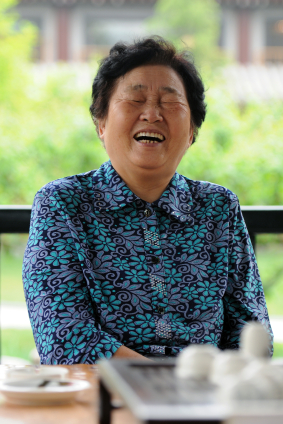
Here’s my latest article on McKnight’s Long-Term Care News:

Though it was close to 20 years ago, I’ll never forget the reaction of one of my patients to losing both of her legs to diabetes.
“I’m 81 years old and I’ve traveled and danced as much as I could. I wasn’t sick a day in my life until this happened. I’m satisfied,” Lila told me earnestly.
I was astonished by her acceptance of such a difficult situation. If it had been me, I was sure I would have railed at the injustice of the world.
Residents like her, however, make it quite clear that it is possible to be grateful and to live fully, despite disability.
Lila came to mind recently when I asked a resident, Daisy, how she was doing three years after a debilitating stroke. Her curt reply: “The same old damn thing — I still can’t walk.”
Creating better mood
A 2015 study in Spirituality in Clinical Practice suggests it might be possible to use the tool of gratitude in order to help residents like Daisy.
The study looked at the impact of gratitude and spiritual well-being on a group of asymptomatic heart failure patients with an average age of 66.
The researchers found that “gratitude and spiritual well-being are related to better mood and sleep, less fatigue, and more self-efficacy.” Those positive effects can reduce the chances that an individual will move from being asymptomatic to symptomatic heart failure, which is “associated with a five-fold increase in mortality risk.”
The researchers point to studies that tried to enhance participants’ sense of gratitude. Gratitude is considered part of “positive psychology,” which focuses on the strengths that allow individuals and communities to thrive.
For the entire article, visit:

Posted by Dr. El - March 4, 2015 - Bullying/Senior bullying, Business Strategies, McKnight's Long-Term Care News, Resident education/Support groups
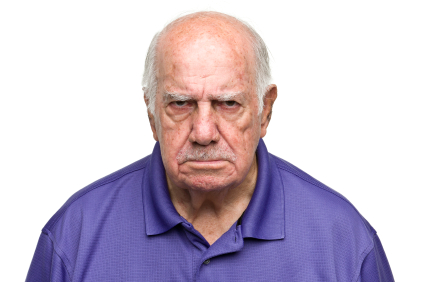
Here’s my latest article on McKnight’s Long-Term Care News:

Things were different when I was a kid. People regularly drove while intoxicated. The high school archery team practiced on the football field while the track team ran around the periphery. Children bullied their peers without anyone giving it much notice.
These days, drunk driving prohibitions abound, schools are no longer casual about teens with potential weapons, and children start learning about bullies in kindergarten.
When it comes to bullying in senior communities, though, we’re still behind the times.
What is senior bullying?
According to the American Psychological Association, “Bullying is a form of aggressive behavior in which someone intentionally and repeatedly causes another person injury or discomfort. Bullying can take the form of physical contact, words or more subtle actions.
The bullied individual typically has trouble defending him or herself and does nothing to ‘cause’ the bullying.” Bullying that does not involve physical contact is sometimes referred to as “relational aggression.”
According to senior bullying expert Dr. Robin Bonifas at Arizona State University, 10% to 20% of elders in senior communities experience bullying.
Dr. Margaret Wylde of the ProMatura Group reports that senior bullying occurs in every independent living community studied in her 2014 report, “Make Them Feel at Home,” sponsored by the American Seniors Housing Association.
In that study, bullying fell into the category with the largest relationship to whether or not the community feels homelike. Study participants described problems such as “difficulties making friends, being lonely, not fitting in, not having common interests, bullying by cliques, and missing their friends.”
Wylde notes that increasing residents’ sense of being at home results in fewer departures from the independent living community and reduced staff turnover, leading to an estimated $52,242 in savings over the course of a year. (Far more than enough to fund a bullying prevention program!)
Increased media focus
Senior bullying is receiving increased attention in the mainstream media, with articles such as Paula Span’s New Old Age column, Mean Girls in Assisted Living and Jennifer Wiener’s Mean Girls in the Retirement Home. (“Mean girls” tend to engage in gossip, excluding others and establishing cliques, while male bullies are more likely to yell and threaten.)
Heightened media exposure for the issue increases the likelihood that potential residents and their adult children will be asking about bullying prevention when they’re searching for a senior living community.
Steps to reduce bullying
In order to address bullying in long-term care, several steps should be taken:
For the entire article, visit:

Posted by Dr. El - August 7, 2014 - McKnight's Long-Term Care News, Resident care, Resident education/Support groups
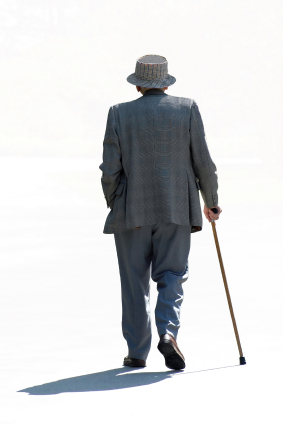
Here’s my latest article on McKnight’s Long-Term Care News:

According to the American Geriatrics Society, one in three adults over the age of 65 falls each year. Falls represent the leading cause of fatal and nonfatal injuries among older adults. You might be surprised to hear some of the contributing factors of falls and the psychology behind them. I also have advice on ways residents and staff can reduce the likelihood of falls.
Factors associated with falling
Falls are caused by many different influences, often in combination. Some common elements (1) include:
- Medication — the major contributors are psychotropics (especially benzodiazepines, antidepressants, and antipsychotics), medications that reduce blood pressure and anticonvulsants
- Polypharmacy — one study found a 14% increase in fall risk with the addition of each medication beyond a four-medication regime, regardless of the group of drugs studied
- Orthostatic hypotension — researchers noted a 69% increased risk of having an injurious fall during the first 45 days following antihypertensive treatment
- Alcohol abuse
- Diabetes mellitus
- Confusion and cognitive impairment
- Gait and balance disorders
- Muscle weakness
- Poor vision
- Urinary incontinence
- Inappropriate footwear
- Environmental factors including home hazards
Impact of falls for residents
Falls can have a huge effect on the quality of life of our elders, who may have diminished mobility following an injurious fall. One-third of those who have fallen develop a fear of falling again and often reduce their activities in order to decrease the likelihood of similar mishaps. For those who have fallen in a facility, staff may limit the resident’s activities. Restricted activities, whether self-imposed or enforced by others, can contribute to depression. As noted above however, prescribing anti-depressants can increase the risk of future falls.
Concealed falls
Due to fear that their independence will be limited, some elders may hide the fact they’ve fallen. Residents have confessed past falls to me in their psychotherapy sessions, saying they were afraid they’d be forced into a wheelchair if anyone knew, or that they wouldn’t be allowed to go home after rehab. Psychotherapy might focus on the toll of untreated injuries due to silence following a harmful fall, whether or not returning home is realistic, or on ways to safely manage the activity that led to the fall.
(1) http://www.patient.co.uk/doctor/prevention-of-falls-in-the-elderly-pro
For the entire article, visit:

Posted by Dr. El - December 21, 2012 - Nominations/Awards, Resident education/Support groups
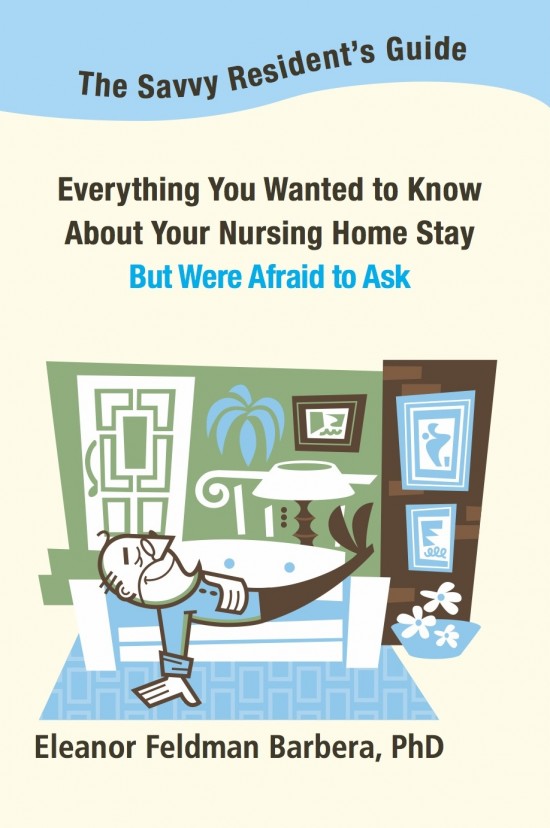
Exciting news! The Savvy Resident’s Guide is the book club selection for an assisted living facility in California! I’m thrilled to hear that residents will be discussing the book. It’s exactly what I hoped for when I wrote it — that the information would get to the people who need it most and that it will generate discussion about how to handle the many challenging situations that arise in long-term care. I hope the readers find The Savvy Resident’s Guide informative and empowering and I thank them for giving me such a wonderful holiday gift.
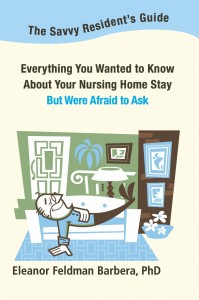
Posted by Dr. El - November 29, 2012 - Books/media of note, Resident education/Support groups


Many nursing home residents have experienced an amputation, an issue that’s often under-addressed both in the facility and in the media. (Limb loss should, but doesn’t always, trigger a referral for psychological services or other support.) Grey’s Anatomy has been working with The Amputee Coalition to make their portrayal of a character with an above knee amputation as realistic as possible. Tonight, 11/29/12, they plan to air a public service announcement about The Amputee Coalition to raise awareness about the resources available to amputees and their families. For more information about the collaboration between the coalition and the show, click here. To read more about Grey’s Anatomy and its characters, click here. Watching or discussing the show with residents could be an opportunity to recognize their concerns about limb loss and to consider what other support they might need.
Posted by Dr. El - October 2, 2012 - Business Strategies, Communication, Customer service, Long-Term Living Magazine, Resident care, Resident education/Support groups

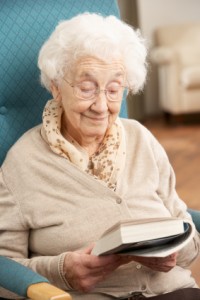 Here’s my latest article on Long-Term Living magazine online:
Here’s my latest article on Long-Term Living magazine online:
“Thanks, Doc, for telling me about this group!” Mr. Jones smiled and held up the magazine he’d gotten from the National Parkinson Foundation. “Except for that actor, I didn’t even know one person with Parkinson’s before I got my diagnosis—now I find out there are enough of them to have a whole Foundation!”“You feel better knowing you’re not alone,” the psychologist reflected.“Not only that,” he said, “but I’m learning a lot about Parkinson’s and how to handle it. I used to get so angry when I couldn’t do the things I used to do, but now I see it’s my illness. I’m gonna figure out how to deal with it,” he said with conviction.Like Mr. Jones, many residents enter long-term care with medical illnesses that are unfamiliar to them, sometimes years after their diagnoses. As discussed in the article 5 Reasons to Educate Residents About Their Illnesses, not only are properly educated residents more compliant with healthcare recommendations, but the coming baby boomers are going to demand information about their illnesses. Nursing homes that provide education for residents (and families) will be offering cutting-edge services that enhance the experience of their facilities and increase customer satisfaction.Here are seven simple methods to educate residents that are easy to implement and will help your facility stand apart from the crowd:
- Encourage discussion with medical staff upon admission and diagnosis. Part of the initial assessment of new residents should include asking them whether or not they know what their diagnoses are. Nurses and doctors can offer a brief explanation of unfamiliar terms and assess the need for more information, the length of time since diagnosis (the more recent the diagnosis, the more likely the resident will be in emotional distress and may benefit from mental health support), and the level of family involvement (involved family may need information too). Any new diagnoses after admission should be discussed with the physician and followed up as needed.
- Dispense fact sheets about illnesses. Every illness is Google-able. Chances are that your boomer residents and/or their family members will be researching their illnesses on their smartphones or laptops, but the details they’re obtaining may not be from reputable sources. By providing information from established medical sites, staff can direct residents to credible resources. The staff members also will have easy access to the information and can familiarize themselves with the illnesses and required care. Fact sheets could be in a binder available at the nursing stations for the staff to distribute or in a magazine rack accessible to the residents and visitors.
- Provide information about illness organizations and how they can join. Along with the basic details an illness fact sheet provides, residents can be offered information about disease-specific organizations. The mere knowledge of the existence of such groups can be helpful, since many residents feel alone with their illnesses, despite the fact that they may be sitting in the hallway next to another resident with the same disease. Privacy laws prevent staff members from sharing such similarities, and residents might not feel comfortable discussing their physical concerns with a neighbor on their floor. Illness-related societies can offer support, coping strategies, hope and perspectives that others are unable to provide. Joining such organizations can be an important step in regaining a sense of control over one’s life.
For more, visit LTL magazine online:
____________________
Now available on Amazon:
Everything You Wanted to Know About Your Nursing Home Stay
But Were Afraid to Ask
Posted by Dr. El - August 21, 2012 - Business Strategies, Communication, Customer service, Long-Term Living Magazine, Medication issues, Resident care, Resident education/Support groups


Here’s my latest article in Long-Term Living Magazine online:
5 reasons to educate residents about their illnesses
“How long have you had Parkinson’s?” the psychologist asked Mr. Jones during his initial evaluation.
“They just told me the diagnosis when I got here last week, but I suppose I’ve had it for a while.” He said it casually, but his hands were clenched and his voice held a note of tension.
“Did the doctor explain what it is or give you information about the Parkinson’s Foundation?”
“No. All I know is that it’s the same disease that young actor has—what’s his name?”
“Michael J. Fox.”
“Yeah, that’s the one.”
The psychologist assured the resident she’d bring him a pamphlet from the Parkinson’s Foundation the following week. It would work better, she thought to herself, if the medical staff provided the physical health information so she could follow up with the mental health aspects.
Residents often enter long-term care with surprisingly little knowledge about their conditions, whether they have a recent diagnosis or have been living with an illness for many years. This lack of information isn’t good for residents, families or facility staff.
Here are five reasons why we should teach our residents about the illnesses they live with:
1. Education leads to more active resident involvement in care.
When residents have information about their illnesses, they are more able to accurately report their symptoms to the medical team and to provide the type of information that improves treatment. A resident without knowledge is a passive recipient of medication and care; a resident with knowledge can partner with his or her medical team to address needs and find effective solutions. Joan, for instance, had multiple sclerosis and was keenly aware that the hot summer made it difficult for her to walk in rehab. She was able to work with her therapist to find more manageable activities so that she could continue with her rehab program during the summer months. Contrast this with Leon, who blamed himself for his MS symptoms, believed his difficulty walking was a personal failure, and was referred for psychotherapy when he stopped attending rehab. With encouragement and some psychoeducation about his illness, Leon was literally able to get back on his feet again.
2. Knowledge increases compliance.
Uneducated individuals are less likely to comply with treatment recommendations or may reject medications due to side effects without fully considering potential benefits. Individuals who understand why particular medications are given and how to cope with potential side effects are more likely to comply with treatment. They’re also more likely to have reasonable, informed objections for foregoing a particular course of treatment—reasons that can be readily understood and documented. For example, Lucille was initially resistant to the dialysis treatments that were recommended for her. Once she gathered information and spoke to some other residents in the dialysis program, she ultimately decided that its life-saving benefits were worth the time and discomfort of the treatments. Thomas, on the other hand, decided against dialysis and was able to explain and document his end-of-life wishes clearly, based on his knowledge of his illness.
3. Information reduces anxiety.
Posted by Dr. El - June 15, 2012 - Communication, Medication issues, Resident education/Support groups

 Early in my blogging, I wrote a post for residents about how to speak to doctors, outlining what I call the Newspaper Headline Approach. It’s designed for residents to make the most of their interactions with their physicians. I was reminded of the Newspaper Headline approach when I read a recent Mind the Gap post by Stephen Wilkins, MPH titled Why It’s So Important For Physicians To Listen – The Patient’s Perspective. How to talk and why to listen — a great combo.
Early in my blogging, I wrote a post for residents about how to speak to doctors, outlining what I call the Newspaper Headline Approach. It’s designed for residents to make the most of their interactions with their physicians. I was reminded of the Newspaper Headline approach when I read a recent Mind the Gap post by Stephen Wilkins, MPH titled Why It’s So Important For Physicians To Listen – The Patient’s Perspective. How to talk and why to listen — a great combo.
Dr. El’s Newspaper Headline Approach
Talking to a medical doctor is not like talking to a normal person. In a regular conversation, one person says, “Hi. How are you?” The other says, “Fine. And yourself?” And they go from there. If busy Dr. Shah stops by Mrs. Crenshaw’s room, inquires how she is, and hears that she’s “Fine,” he’s likely to be on to the next room before Mrs. Crenshaw can utter another word. Instead, I suggest the Newspaper Headline Approach.
Newspapers grab the attention of readers by revealing the most important and tantalizing details first, so we’re compelled to read on. The same approach, applied to a visit from a physician, would sound like this:
Dr. Shah: ”Hi. How are you, Mrs. Crenshaw?”
Mrs. Crenshaw’s headline: ”I Have Pain.”
Now she has Dr. Shah’s attention and he will almost certainly ask her where she has pain and other follow-up questions.
Another possible headline: ”I Have Two Things I Want to Discuss with You.”
This indicates to Dr. Shah that he’s going to need to stick around after the first issue is complete, and it helps him estimate how much time he can spend on each matter. With the Newspaper Headline Approach, the most important problem is revealed first. This way, if Dr. Shah has to leave, at least Mrs. Crenshaw had her most pressing concern addressed, and her doctor is aware there is more to be discussed.
Perhaps this sounds simple, but it’s surprisingly difficult not to answer the question, “How are you?” with the response, “Fine,” even when we’re not. It takes practice to resist the temptation and to tell the physician from the start what’s really going on.
Why It’s So Important For Physicians To Listen – The Patient’s Perspective
by Stephen Wilkins, MPH at Mind the Gap
A recent qualitative study (structured interviews) of patients conducted at McGill University School of Medicine underscores the importance of listening in physician-patient interactions. In this study, patients were asked to identify the qualities of a good physician. The following is a typical patient response:
“A good physician is somebody who will listen to what the problem is and explain to you what it is and what is being done.’’
When people were asked why listening by the physician was so important, researchers discovered three important themes that have apply to every provider today.
Theme #1 – Respondents (people/patients) believed that listening was essential if the physician was to arrive at the right (and credible) diagnosis.
Representative Comments:
- ‘Physicians “should trust the person in front of them and hear what they’re saying. . .because I know my body better than anybody else.“
- ‘‘Listen to what they [patients] have to say; not just what other people wrote about them in the doctor’s notes.
- ‘‘[If] I feel that I haven’t had enough time with you to tell you exactly what my story is, even when you give me a prescription I’m going to say, ‘Really? Is this prescription right for me and for my illness? Or [is it] going to give me more complications?’. . .and I think sometimes that’s why you find patients will take it for 1–2 days and after that they forget about it, because they say, ‘He didn’t hear what I had to say about this pain.
Visit Mind the Gap to read the whole post, which discusses all three important themes and the take-aways from the research.
Posted by Dr. El - February 15, 2012 - Inspiration, Resident education/Support groups, Something Good About Nursing Homes

I always enjoy reading about senior recreation programs that offer options way beyond bingo. Not that there’s anything wrong with bingo, but when it’s my turn, I’ll be looking for a nursing home with a substantial activities schedule. A reader — thanks, RR — informed me of the success of the college-level psychology courses he organizes at his assisted living facility. (When it’s my turn, maybe I’ll teach one of those…) The New York Times article excerpted below describes a collaboration between Carnegie Hall musicians and Beth Abraham nursing home that gave residents the experience of a lifetime.
If you’ve heard of an interesting or unusual program for seniors, especially those in the nursing home, please share it in the Comments section.

Weakened by Age and Illness, Hands Teem With Creativity
By SUZANNE DeCHILLO/The New York Times
Published: February 12, 2012
Through the Musical Connections program, residents at Beth Abraham Health Services like Richard Ivory were given the opportunity to collaborate with musicians from Carnegie Hall’s Weill Music Institute in creating and performing original pieces.
Ms. Previte, 72, who is chronically ill, writes lyrics. She scribbles the words on the back of nursing home menus, mostly songs about love lost or love found.
For two weeks, she joined six other residents at Beth Abraham Health Services in a collaboration with seven chamber music players from Carnegie Hall’s Weill Music Institute, whose Musical Connections program aims to bring music to a wider audience, in healthcare settings, prisons, homeless shelters and senior service organizations.
Read more…















 Here’s my latest article on Long-Term Living magazine online:
Here’s my latest article on Long-Term Living magazine online:

 Early in my blogging, I wrote a post for residents about how to speak to doctors, outlining what I call the Newspaper Headline Approach. It’s designed for residents to make the most of their interactions with their physicians. I was reminded of the Newspaper Headline approach when I read a recent Mind the Gap post by Stephen Wilkins, MPH titled Why It’s So Important For Physicians To Listen – The Patient’s Perspective. How to talk and why to listen — a great combo.
Early in my blogging, I wrote a post for residents about how to speak to doctors, outlining what I call the Newspaper Headline Approach. It’s designed for residents to make the most of their interactions with their physicians. I was reminded of the Newspaper Headline approach when I read a recent Mind the Gap post by Stephen Wilkins, MPH titled Why It’s So Important For Physicians To Listen – The Patient’s Perspective. How to talk and why to listen — a great combo.
